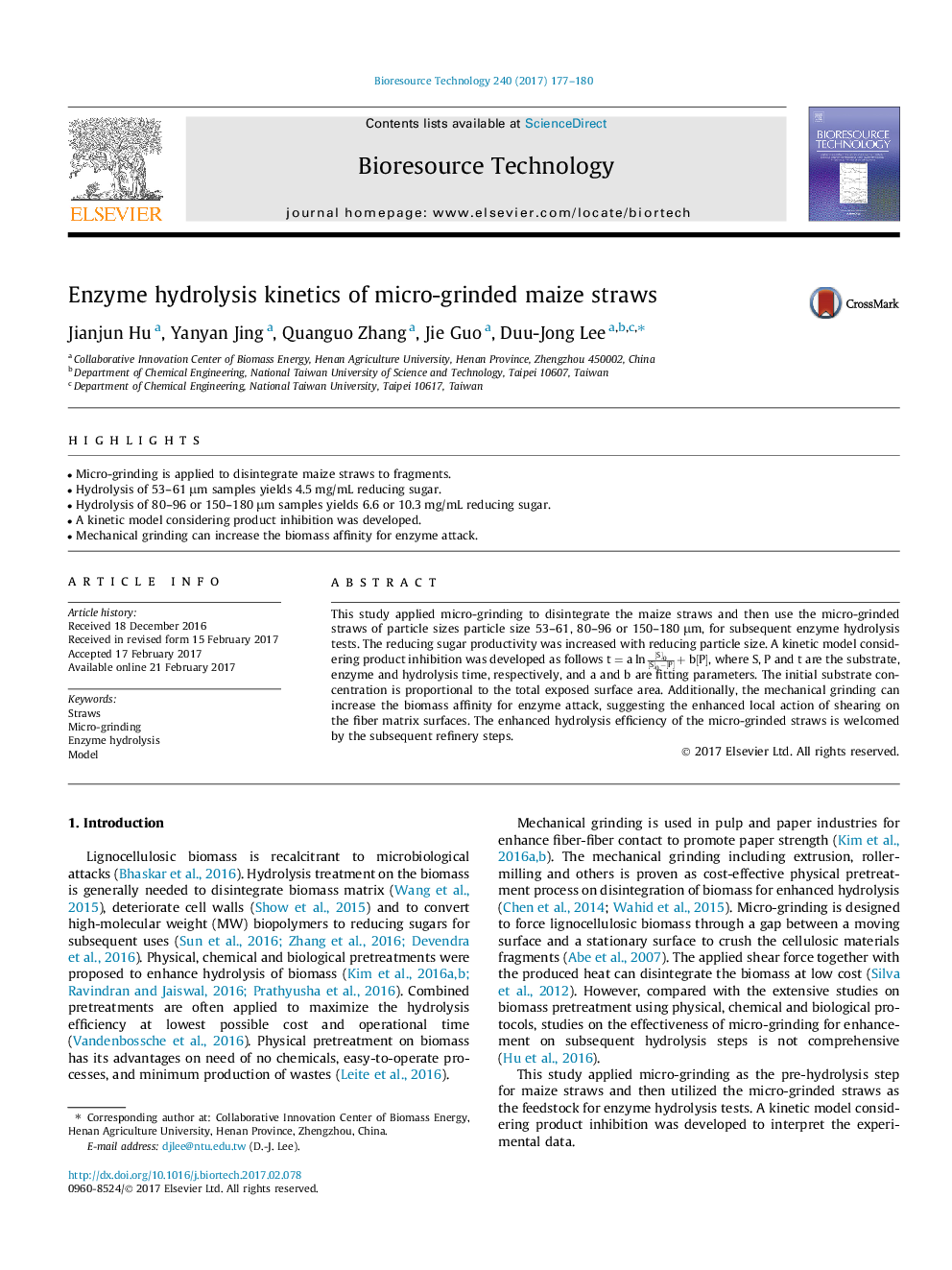| Article ID | Journal | Published Year | Pages | File Type |
|---|---|---|---|---|
| 4996742 | Bioresource Technology | 2017 | 4 Pages |
â¢Micro-grinding is applied to disintegrate maize straws to fragments.â¢Hydrolysis of 53-61 μm samples yields 4.5 mg/mL reducing sugar.â¢Hydrolysis of 80-96 or 150-180 μm samples yields 6.6 or 10.3 mg/mL reducing sugar.â¢A kinetic model considering product inhibition was developed.â¢Mechanical grinding can increase the biomass affinity for enzyme attack.
This study applied micro-grinding to disintegrate the maize straws and then use the micro-grinded straws of particle sizes particle size 53-61, 80-96 or 150-180 μm, for subsequent enzyme hydrolysis tests. The reducing sugar productivity was increased with reducing particle size. A kinetic model considering product inhibition was developed as follows t=aln[S]0[S]0-[P]+b[P], where S, P and t are the substrate, enzyme and hydrolysis time, respectively, and a and b are fitting parameters. The initial substrate concentration is proportional to the total exposed surface area. Additionally, the mechanical grinding can increase the biomass affinity for enzyme attack, suggesting the enhanced local action of shearing on the fiber matrix surfaces. The enhanced hydrolysis efficiency of the micro-grinded straws is welcomed by the subsequent refinery steps.
